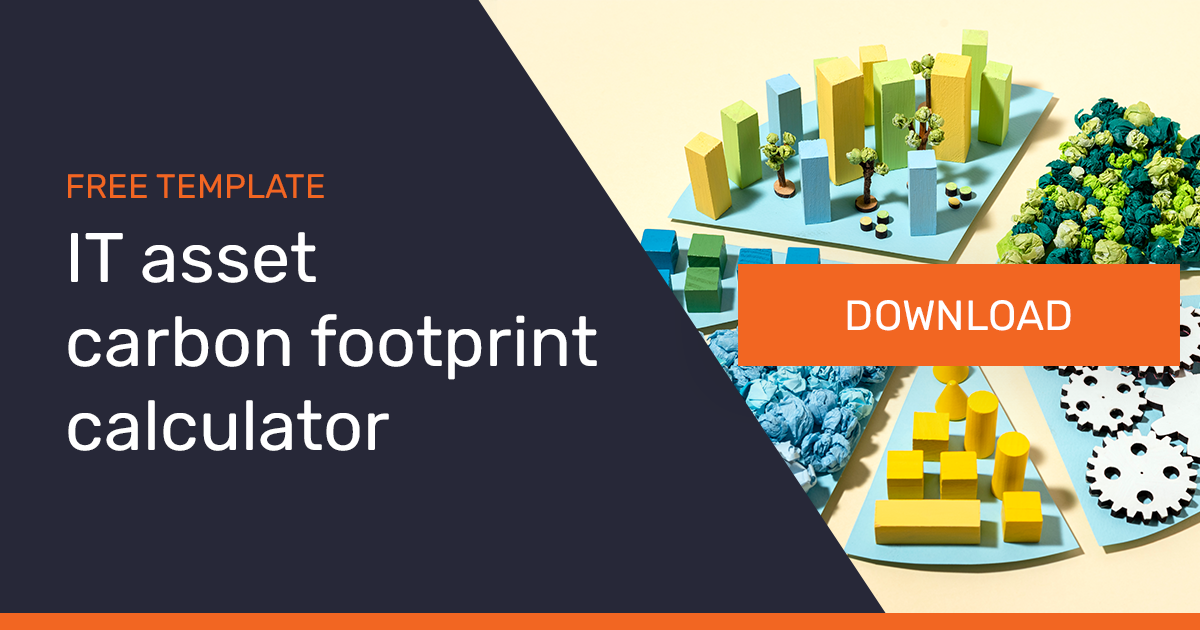How does IT Asset Management link to your Carbon Footprint?
Recent studies show that 15% of a typical administrative company’s CO2 emissions come from its IT devices. From 2024 onwards, the EU’s Corporate Sustainability Reporting Directive (CSRD) will introduce new sustainability legislation, mandating all listed and large companies to report on their sustainability efforts more extensively.
Large companies will start requiring their contractors to comply as well, which means that almost all companies in the EU will face the need to start tracking and reporting their CO2 emissions.
In this blog, we dive deeper into IT asset management through the lens of environmental sustainability and carbon footprint reporting.
From Traditional Asset Management to Modern Lifecycle Management
IT asset management traditionally focuses on maximizing the use of all different devices. This approach is important as it leads to more efficient resource utilization, thereby reducing waste and cutting down emissions.
However, modern asset management extends beyond asset usage tracking. It also includes procurement and disposal processes. For the environment, it is important for companies to understand the entire lifecycle of their assets. This is an area where modern ITAM (IT Asset Management) solutions can be extremely helpful.
Did you know that manufacturing accounts for approximately 70% of an IT device’s emissions?
Ensuring Reuse and Environment-Friendly Disposal
The disposal of assets plays a crucial role in environmental sustainability. Devices forgotten and left in storage not only waste valuable resources but also contribute to environmental damage when not disposed of properly.
When a laptop is recycled for reuse, it saves on average 140 kg of CO2 emissions. Many devices can also be reused twice, after which their materials can still be separated and the components used for spare parts.
Selling old and unused devices for reuse is also smart money-wise. Depending on the model, condition, and processor performance, a used business laptop can be sold from 200 to 300 euros.
Calculating your IT assets CO2 footprint
You do not need to be a science major to calculate the CO2 emissions caused by your IT assets. Here are the simple steps that you can take to get the job done:
- Make a list of the various models/manufacturers you are using.
- Find out the CO2 values of each model for the following categories: manufacturing, transporting and usage.
- Calculate the average figures for the three CO2 metrics found in section 2 for each product group (e.g. Laptops average CO2 for manufacturing is 140 kg, transporting 20 kg and usage 40 kg).
- List all of your assets into an Excel and use the average values in section 3 to calculate your total CO2 emissions.
- If you recycle your old IT devices into reuse, you can compensate for the device’s manufacturing CO2.Take this into account to get the net CO2 number.
If you do not have an Excel template to do this or need a place to start, you can download our carbon footprint calculator template here.
Automating Carbon Footprint Reporting
As demonstrated above, it is very much possible to manually track your IT assets CO2 footprint. This does of course require quite a bit of manual work and reports are not available in real time.
With the help of ITAM software, your carbon footprint tracking can be automated. By automating the reporting, businesses can maintain more accurate records of their environmental impact, ensuring that assets are managed responsibly throughout their lifecycle.
The Role of Modern ITAM Software
As we move forward, integrating environmental sustainability into asset management is not just moral but also smart for the business. By adopting sustainable practices, businesses can contribute to the planet while ensuring better value for their assets.
With modern ITAM software you can easily stay on top of your carbon footprint and ensure that all of your assets are used to their full potential.
© Copyright – IDR Oy – Privacy Policy

